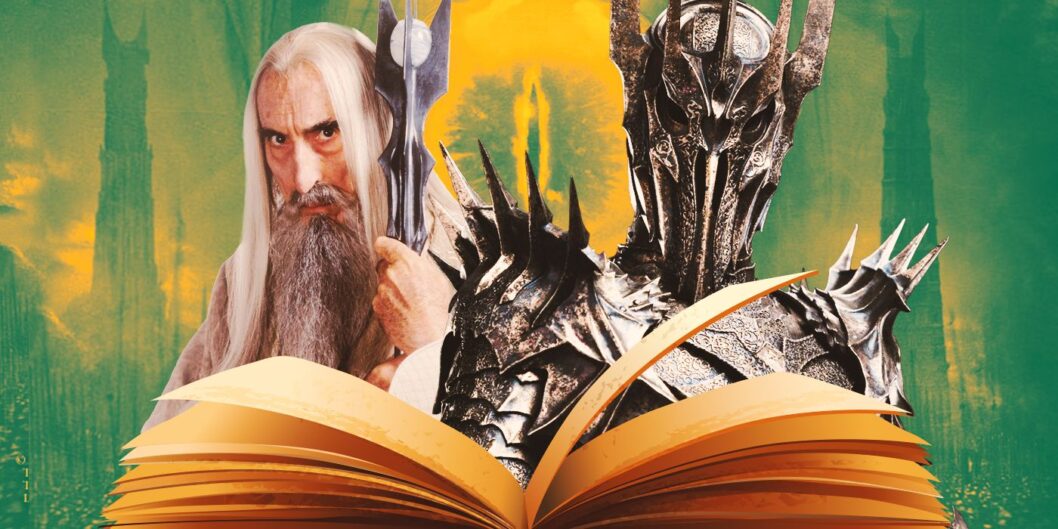Exploring the Fate of Sauron and Saruman: The Distinctions Between Tolkien’s Text and Jackson’s Adaptations
Fans of The Lord of the Rings trilogy often ponder the fates of its villains, particularly Sauron and Saruman, after their stories conclude on screen. While both characters meet their ultimate demise in both J.R.R. Tolkien’s texts and Peter Jackson’s acclaimed films, the paths and manner of their endings differ significantly. This exploration delves into how these notorious figures meet their fates both in the beloved cinematic adaptations and the original literary sources.
Sauron’s Defeat and Transformation
In The Lord of the Rings: The Return of the King, Sauron, portrayed as the ominous Great Eye, meets his end as Barad-dûr collapses during the climactic destruction of the One Ring. As shown on screen, this event creates a moment of victorious relief for characters like Aragorn (Viggo Mortensen) and Gandalf (Ian McKellen). However, Tolkien’s narrative presents a different perspective on Sauron’s defeat.
Tolkien describes a more metaphysical downfall: when the One Ring is destroyed in the fires of Mount Doom, Sauron is permanently stripped of his physical form. In The Return of the King, Gandalf declares, "the realm of Sauron is ended!" The text conveys that Sauron’s essence, originally a Maia spirit, is left to wander as a dark presence—now devoid of physicality and influence in Middle-earth.
The vivid imagery Tolkien uses illustrates this transformation: "a great wind took [Sauron], and it was all blown away, and passed; and then a hush fell." Unlike the visual spectacle of Sauron’s destruction portrayed in Jackson’s films, Tolkien’s version emphasizes his complete and utter defeat, resembling the fate of Morgoth, his former master.
Saruman and His Tragic End
In The Lord of the Rings: The Two Towers, directed by Jackson, Saruman (Christopher Lee) is killed by Grima Wormtongue (Brad Dourif) in a climactic betrayal, a dramatic conclusion designed for cinematic impact. Yet Tolkien’s narrative offers a longer and far more tragic arc for Saruman.
Post-war, Saruman survives and escapes to the Shire, disguised as “Sharkey.” He attempts to exert his influence over the Hobbits, leading to the Scouring of the Shire, a chapter that Jackson notably omitted from his films. This chapter reveals that upon the Hobbits’ return from their arduous journey, they discover that their home has been corrupted, more closely resembling Isengard than the bucolic Shire they left.
When the Hobbits reveal Saruman’s true identity, Frodo shows him mercy, choosing to spare his life. This act of compassion reflects Frodo’s character, highlighting themes of redemption and mercy present throughout Tolkien’s works. Tragically, Saruman’s attempt to regain power leads to his death at the hands of Wormtongue, marking a grim and gruesome conclusion. As noted in the text, after Saruman’s throat is cut, a trio of Hobbit archers swiftly eliminate Wormtongue, concluding Saruman’s arc with a sense of grim justice.
Differences and Adaptational Choices
The differences between Tolkien’s stories and their cinematic adaptations underscore varying interpretations of themes such as power, redemption, and morality. While Peter Jackson’s adaptations present dramatic and sensory experiences, they often diverge from the depth of character exploration found in the original texts. For instance, Christopher Lee expressed disappointment with how Saruman’s demise was handled, wishing for a more faithful portrayal of the character’s literary fate.
Both interpretations, however, maintain the overarching narrative that Sauron and Saruman are ultimately defeated. Their transformations—from formidable adversaries to powerless shadows—highlight the triumph of good over evil, even when the specifics of their endings vary.
Conclusion: Significance and Impact
The exploration of Sauron and Saruman’s endings serves as a reminder of how adaptations can alter narratives while still aiming to capture their essence. For audiences new to Tolkien’s work, the film adaptations introduced these legendary characters to a broader audience, while die-hard fans appreciate the richness of the source material. Understanding these differences provides a deeper appreciation of the lore and the thematic explorations within Tolkien’s legendary tales, emphasizing the enduring legacy of Middle-earth in both literature and cinema.









